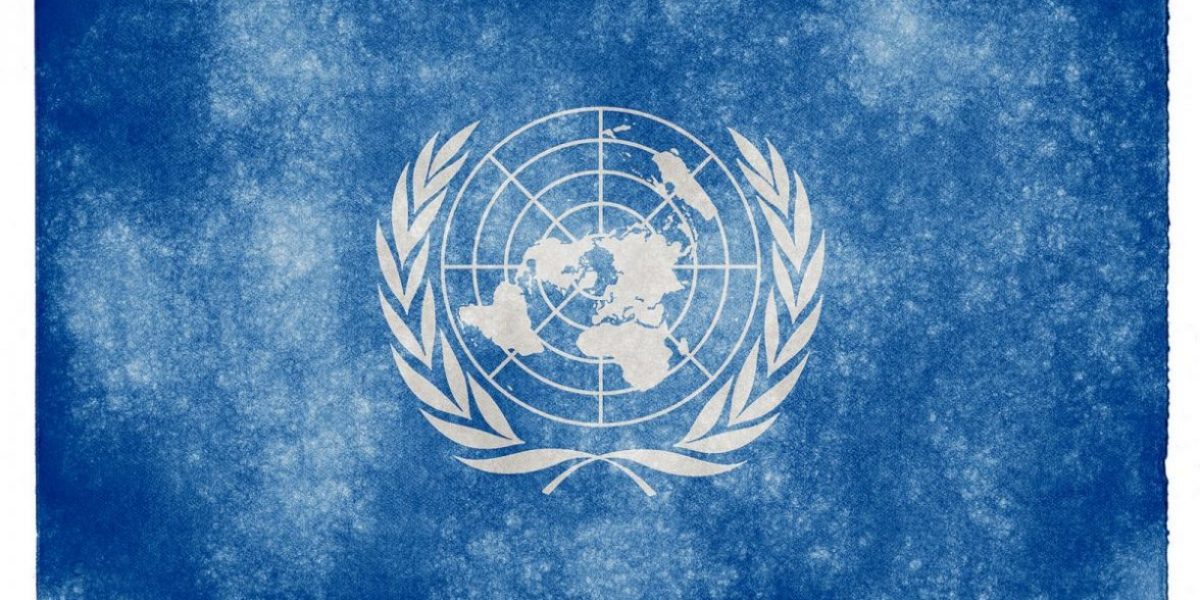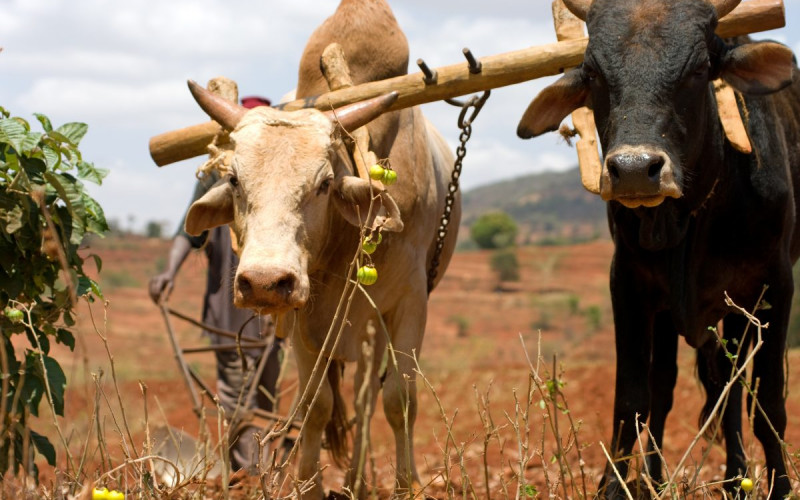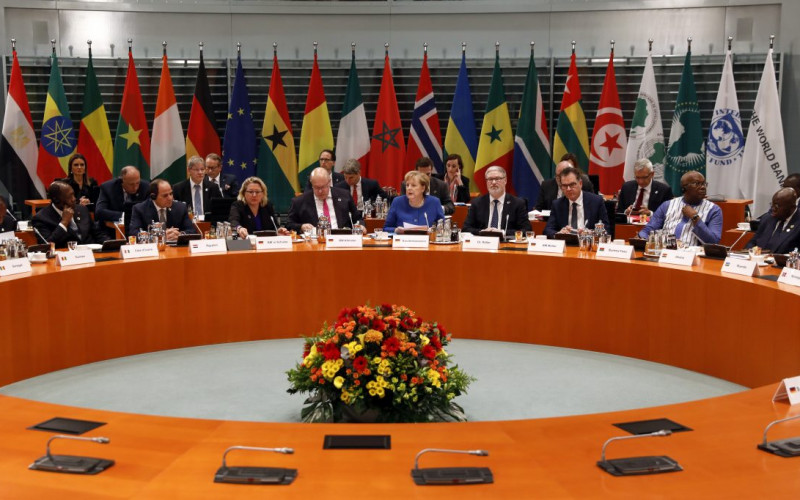For years, the subject of development aid occupied an occasional back page in the developed nations’ media. This has changed. Stories about aid and calls for more of it are now ubiquitous. Recently, reports from the UN and Britain’s Commission for Africa added to the chorus with calls to double aid, particularly to Africa.
In fact, from a rational standpoint doubling aid money is a bad idea. Development aid, including that which is directly targeted to the poor, has not reduced poverty in any lasting way, and more money will not make it work any better in the future. So I have a modest counter-proposal to offer: Cut aid in half, send more than half of the ‘experts’ home, close down or shrink most of the hundreds of organisations in the business, and use the money that’s left strategically and intelligently.
The more-aid movement not only ignores rational thought, it ignores the history of aid itself. American economist Jeffrey Sachs (who was the lead author of the recently released 3,000-page UN report on meeting the Millennium Development Goals, see eAfrica, April 2005) uses terms like ‘shock therapy’ when referring to what needs to be done in Africa. The UN report specifies more investment in universal primary education, gender equality, hunger reduction and slashing preventable deaths among children and mothers. The report, acknowledging scepticism about the mediocre results of past aid, calls for a series of investments in ‘fast-track’ countries as well as a number of ‘quick wins’ that the report says will have dramatic results, for example mass distribution of insecticide-impregnated bed nets to prevent malaria, distribution of de-worming medicines, the elimination of school fees for primary education, and giving soil nutrients to poor farmers.
The subtext is that the time has come to stop fooling around – it is time to tackle poverty with a big push. And if this push is backed by a steady increase in aid, the number of poor people in the world (currently about 1 billion who live on less than $1 a day) will be cut in half by 2015, and world poverty eliminated altogether by 2025.
No easy road
A big push? We had that in the 1950s when we first began talking about hunger, illiteracy and disease. The UN itself declared freedom from hunger a major theme from 1960 to 1965 and made the 1960s The Decade of Development. We had the landmark 1978 Alma Ata Conference on Primary Health Care, which called for slashing preventable deaths among children and mothers and ‘health for all by the year 2000’. We had the 1980 resolution: ‘Clean water for all by the year 1990’. The development community has been working on malaria, guinea worm eradication, illiteracy, women’s rights and equality, and primary education for decades. And this is in addition to its work in soil improvement, road and bridge building, governance, institutional change, legal reform, environmental protection, consciousness-raising, small enterprise development and a host of other interventions. There is almost nothing we don’t do or haven’t tried.
A World Bank consultant database from the early 1990s contains 52 development-related job classifications and over 1,000 skill sub-categories. The World Bank alone employs about 9,300 people, and has become so adept at making sure no sensitivity goes unattended that around 500 of them are anthropologists. Over the years, the world’s development agencies have also distributed literally billions of things, from shovels and seeds to wheelbarrows, ploughs, tractors, to food itself. We have given away road construction equipment, pens and paper, typewriters, computers, bandages, syringes, medicines, condoms and, yes, insecticide-impregnated bed nets. Not once has there been a ‘quick win’, not to mention any serious reduction in world poverty, or at least that can be attributed to our work. Most of us who have worked in development in the field, ‘on the ground’ as we say, know this.
Why is it that the close-to-two trillion dollars officially spent on development in the past 60 years have accomplished so little – something almost no one denies? Is it because the push was never big enough? Is it because the shock therapy didn’t carry enough voltage?
The debate on aid effectiveness goes back decades. The truth is, we don’t yet have the full answer to how to ‘do’ development or how to make aid effective. If we did have the answer, aid would be effective. Given that fact, there is a disconnect between, on the one hand, a lingering debate about why aid has not worked, and, on the other hand, a mounting call for doubling the money for it. This transposition of cart and horse, this desire to throw money at a set of problems whose solution remains as elusive as ever, mirrors deep structural problems in the aid business itself, which helps explain its lack of success.
Those who do venture to think about the business of providing aid for development have produced a literature filled with titles containing the words ‘reinventing’, ‘reconsidering’, and ‘rethinking’. The aid industry wants to get it right, but it never does.
Ignoring the lessons of history
Why, then, a doubling of aid money now? Why entertain proposals we have heard and tried before? Have we finally learned something? Is there a new synthesis, a new paradigm? Are there new conditions in the developing world that would make aid more promising?
To answer these questions, let’s look at the three arms of the aid effectiveness debate.
- Recipient countries. They’ve wasted aid and haven’t been accountable; they’ve been corrupt, had inappropriate laws and policies, poor governance and leadership.
- The nature of the problem of development itself. Development is complex and its multifaceted problems cannot be solved with simple or short-term solutions. We need more integrated approaches, more comprehensive approaches (the World Bank’s 1999 Comprehensive Development Frame-work consists of 14 main thrusts and scores of sub-items).
- The institutions that provide aid. The bilateral and multilateral agencies and the thousands of NGOs that have become their handmaidens have become bureaucratic, cumbersome and awkward. They lack strategic clarity and consistency; they get bogged down in process and procedure; and they are prone to what a World Bank staffer has called ‘reverse alchemy’ – turning gold into lead.
As for the first arm of the debate, studies do show that many countries that have fared poorly have indeed mismanaged their affairs. The literature shows how laws, social institutions, government structure, human resources, monetary policy and other factors interact to produce poor results. It is also true that all the fault cannot be laid on the poorest countries alone – many of them used to get caught up in the Cold-War priorities of the donor nations. And, yes, some things have changed.
There is greater awareness of corruption, more countries are acting to address it, and the concepts of good governance, transparency, accountability and other elements of an enabling environment for growth have become widely accepted. One of the arguments for more aid is the positive correlation between development aid and countries with ‘good’ policies: the capacity and will to control inflation and budget deficits and an openness to trade, among other things. One can argue that when countries get their acts together, they don’t need much aid; they are already on their way. And when they don’t have their acts together they cannot make effective use of aid. Either way doubling aid money is not the answer.
On the second arm of the debate: development is a complex challenge. It took the most advanced industrial nations hundreds of years to develop; and even though we now live in a faster world, it is not reasonable to expect that the aid business can finish the job by 2025 with any amount of money. To think so is to ignore everything we have learned, not to mention the work of reputable scholars of the world’s development, such as David Landes and the late PT Bauer. For the challenge is not just about matching bricks and mortar projects – schools, airports, hospitals, or farms – with political and societal institutions capable of maintaining and managing them. It is about the necessarily slow evolution of habits, mentalities and ways of being that surround these institutions. Identities, religion, family, concepts of work, leisure, mutual obligation – you name it – everything is involved in the development process. Clearly, money does not and cannot address these issues, and doubling the money won’t change that. The complexities of development, which vary from place to place, are too many to control and the notion that one can engineer sustainable development directly in poor communities is mere hubris.
It is in the third of these arms of the debate where the core of our failure lies – the development industry itself.
Please let me help
While the industry talks about ‘buy-in’ and ‘ownership’ by the recipients and following an African-led agenda, aid is a surprisingly supply-driven business. Development agencies go around to the recipient countries and suggest possible projects to do. But since development is so complex and cannot be so easily parsed, we end up necessarily making damaging compromises. We put money into something before it’s ready, before doing our homework, before understanding local culture. We get local NGOs with little real management capacity to act as partners, getting them hooked on our money in the process. We assume community groups can manage things (like savings and credit societies or water systems) that community groups in the US, Germany or France could not manage. And we regularly accept mediocrity in the implementation of projects because we need to get the money spent, otherwise we cannot ask for more the next time.
To understand why, one must examine how aid defines success. To act as if we are doing something responsible we put convenient timeframes and likely-sounding proxies for impact in a ‘matrix’ and call it a project. The matrix is otherwise known in the industry as a log-frame, short for logical framework, which lays out objectives, actions and outcomes in neat rows, ostensibly to ensure that aid workers think through their actions and work toward tangible outcomes. A company or an NGO that wins a contract to train agricultural extension workers in Mali fills in the log frame and at the end of 12 months sends its report to the responsible officer in the donor agency, noting that ‘we have trained 7,468 extension workers, as specified in the log-frame.’ The officer checks a box, stamps ‘approved,’ and sends a copy to the disbursement department, which releases the next tranche of money. Everyone is happy. Objectives achieved. No problems, project successful.
But this is a shell game. The individual project can always be contrived so that it has some seemingly concrete results that appear to support a logical development theory. The objective of agricultural extension worker training may fit the project framework like a glove, but if there is no sustainable system to deploy and sustain the workers, then they hang on the shoulders of the Malian government like an ill-fitting suit. Because agricultural productivity depends on many things beyond extension workers, it is possible, indeed probable, that money spent on extension workers won’t have any effect on farm output. Despite such problems, aid donors press ahead on the assumption that more training must be better than less. In reality, it can be a waste of funds and time that would be better spent elsewhere. And misguided projects that fail have the effect of initially raising expectations then dashing them, which leads to growing cynicism at the grass-roots level.
One of the gravest weaknesses of the present aid industry is that funding is only poorly linked to actual outcomes, if it is linked at all. The false precision of the log-frame is part of the problem. But there are other faults.
Agencies and development managers are rewarded for spending and being active, but almost never punished when that spending comes to nothing or entails unwelcome side effects. The agencies can simply keep moving. Staff can escape into the future through an ever-changing succession of short-term, photogenic projects. Sustainability becomes someone else’s problem.
There used to be a saying among Africans who dealt with aid experts: ‘The white man has a big watch, but never any time.’ This mad-hatter aspect of development is just one of its problems. The aid industry always wants to act, to do and to spend, and all with urgency. Thus, a $100 million ‘phase II follow-on project’ is approved before the results of Phase I are in. Mistakes are repeated.
We want to spend more because we unquestioningly accept the idea that doing something is better than doing nothing. Indeed, we believe deeply in doing things, direct ‘targeting’ of problems, in delivering aid ‘packages’ as if development was a result that can be engineered. Moreover, we believe in action, whether we have evidence of its effectiveness or not. We don’t much bother trying to determine with any rigour whether positive changes can be attributed to what we do or not.
Other people’s money
Developing the poor is inherently something done with OPM, other people’s money, which imposes an entirely different dynamic from spending one’s own money. OPM lies at the root of aid’s ineffectiveness; it is OPM that makes us lose sight of what we have learned. It is OPM and the ways in which our bureaucratic agencies account for it that prevent us from doing things carefully, slowly and, therefore, open-endedly; it is money that ties us forever to the aid ‘project’.
Money in development has become an organism with a desire of its own – to be spent, preferably ‘in this fiscal year.’ In many instances it would rather be spent wastefully than not at all.
The World Bank could not hold up its head as the premier development organisation or justify its members’ contributions if it did not lend its annual billions. It gets zero points for holding onto its money. Everything in the development industry conspires to have money spent annually, from the moral imperatives to ‘help’ to accountability laws that make the short-term project necessary to the performance appraisals of key staff who need to make the right steps up the career ladder.
But actual development does not respond well to this kind of spending. It results from an intricate build-up of and interaction between different types of resources: cultural and social capital (mentalities, beliefs, values, social institutions); physical capital and infrastructure; and public capital (the political, legal and economic institutions of society). We cannot engineer development, if only because the number of variables is beyond control. We should instead undertake more subtle and indirect interventions, stimulating, encouraging and cajoling.
Even if we had infinite money to spend on development, it would not work because the mechanisms for getting OPM and accounting for it, inevitably force development actors to sacrifice rigorous thought and integrity in the quest to offer the appearance of progress.
The development industry now must compete intensely for attention, voice, prominence, roles and even venues for grassroots project work. More and more, private development assistance agencies assess their organisational health by checking with their fund-raisers first. The key question for many now is not ‘Are we doing a good job?’ but ‘Are we continuing to grow our donor base?’ The harder questions about performance and whether aid is making a long-term difference are being put on a shelf. Instead, we measure performance by spending.
Image over substance
The nature of OPM obliges development agencies of all types to be continuously in the process of seeking new or renewed funding. They must therefore sell their accomplishments: number of individuals trained in x, y or z; number of institutions supported; number of farmers whose incomes rose; number of bags of wheat produced from newly introduced seeds. Intangible ‘products’ are also sold, and these often are geared to appeal to current trends.
As with all advertising, the image is what counts, and the tendency to embellish the image is strong. In the past, an organisation in development was not afraid to admit failure. Nor was an organisation uncomfortable using the words ‘experiment’ or ‘pilot effort’. Today those two concepts are out. Experimentation rarely happens in development anymore. No one questions the inherent value in experimentation, but no one wants to pay for it. Donors do not want to hear that an organisation is experimenting or developing a pilot. They want their money to ‘count’ for something that can be measured: an outcome, an output. To sell a small experiment as a pilot would be like selling a relatively small egg in a grocery by calling it ‘tiny’ instead of ‘extra large.’
The way organisations sell varies, but one thing is clear – more energy and money is increasingly going into selling. The annual reports of development assistance organisations have become increasingly slick, expensive, and similar. No one can risk not saying the right things and not using the appropriate buzzwords.
How less could be more
It is, unfortunately, politically very easy to brush all of the above aside. Both the Commission for Africa and the UN Millennium Project reports have effectively done so by saying ‘Yes, there are problems, but this time we really have learned how to do it right.’
The problem is that we have not learned the lessons because the institutional imperatives and the incentives facing staff in the industry actively seek to hide failure and thus prevent real learning. Pumping twice as much money through the present broken system will feed the worst of these bureaucratic tendencies and exacerbate corruption. To achieve real change, Africa needs to break the present cycle of dysfunctional aid. To do that I offer the following recommendations:
- The world’s development agencies should go on a diet. Counter-intuitive as it may seem, Africa would be far better off if we cut aid funding in half. Let us slow down and think. Forget, at least for a while, new-ideas programmes and emphases – we know them all. I recommend an immediate moratorium on aid-industry staff recruitment and replacement, with a commitment to reduce worldwide development staff by 30% in three years.
- Aid agencies need to re-evaluate and streamline procedures. All should sign a pledge to find the 10 most senseless procedures in each agency and get rid of them in 12 months.
- There is a gross lack of transparency throughout the aid industry. Aid agencies, development banks and recipient countries should begin posting all aid project descriptions, budgets, working papers and reviews of success on the internet so that the public knows where funds are going and researchers can document what works and what fails and why.
- Pay should be performance-related. If some things still need to be done in project form, how about making staff really accountable for results? To do that, long-term measurements of success should be designed into all projects. Staff should be given a decent salary, not at private sector levels. Fifty percent of that salary could be put into an escrow account and released in six or 10 years only if those long-term goals were met. If the goals are not met, that bonus would revert to the institution. This would be the aid-industry equivalent of executive stock options.
- Aid must be tied to reform. What if we said to aid recipient countries: ‘we will give you X amount of money, but only when you prove to us that you have made certain mutually agreed changes. We will lend you some advice if you feel you really need it, but basically you figure out how best to get from A to B?’
- Donors must stop forcing annual spending. Aid agencies should remove their institutional need to spend in a given fiscal year by judging their effectiveness not by funds spent but by results achieved. All agencies should be encouraged to bank authorised but unspent funds in escrow.
- Marketing money should be re-directed. What about shifting the money we now use for public relations – most of which goes to produce glossy, smiling-peasants-on-the-cover annual reports – to a campaign to convince the world about the wisdom of a level playing field for trade? And how about putting some real effort into bringing the media and the public along on what development is, instead of continuing to pander to emotions and telling half-truths about what will solve hunger, illiteracy and disease?
Do such ideas have much of a chance? Sadly, they do not. It is far more likely that we will have (and waste) double the present money for development aid, and in 2015 new calls for more will arise.








